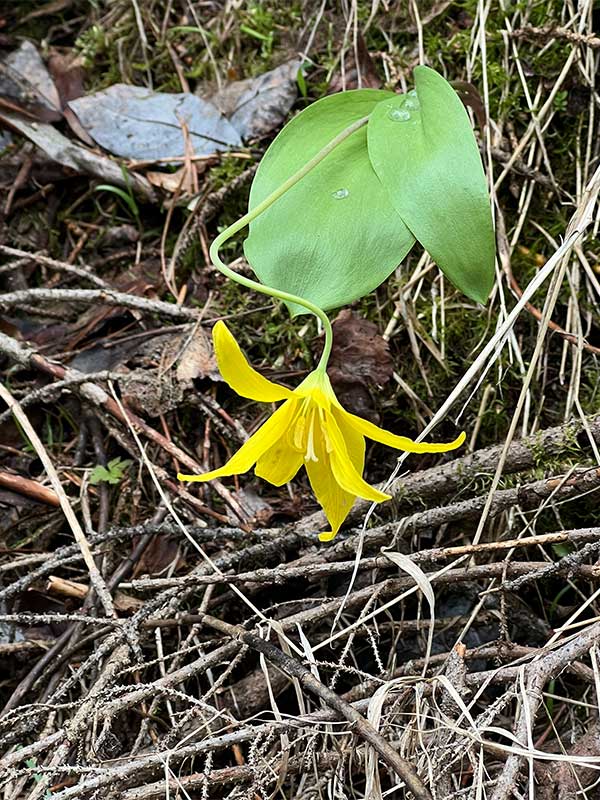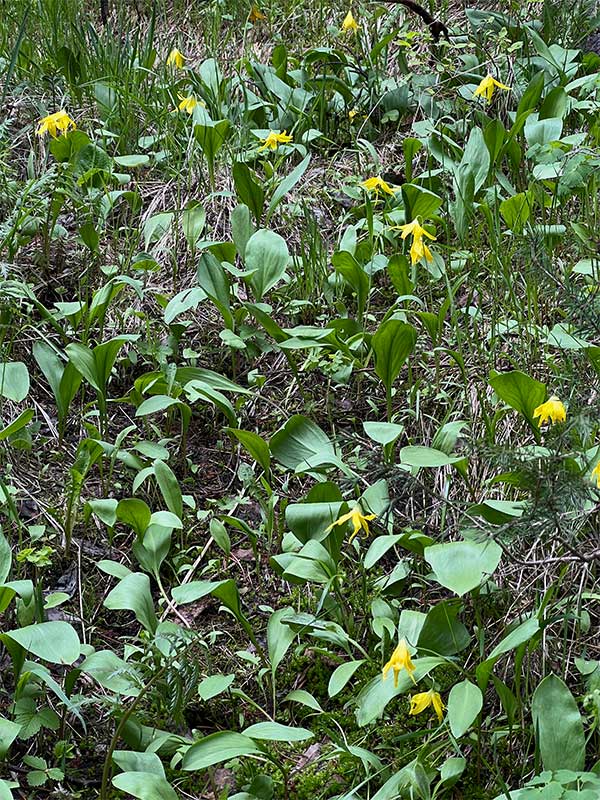Erythronium grandiflorum / glacier lily
- striking, yellow, six tepals – recurved and nodding
- large, yellow or red anthers, a single pistil
- two large green basal leaves
- early spring
Also known as: yellow avalanche lily, dogtooth fawn lily
Although I’m going to describe this species, probably in too much detail, first look at the photos. Once you’ve done that, it is highly unlikely you will have any question about the plant’s identity if you have come across it.
Glacier lilies are called this because they appear at the edges of receding snowbanks and last until mid-June. The plants are perennial, growing from large (1-2 inches) corms buried deep in the soil. Each plant has only two green leaves arising at the plant base. They have wavy edges, but not spectacularly, and can be up to 8 inches long. Each is considerably longer than wide.
Each nodding flower (there may be one to three per plant) is bright yellow with three petals and three sepals, all of which look like petals. The petals are often strongly recurved. Each also has six yellow or red anthers atop white stamens, and a long style. The flowering stalk may reach a foot tall. The flowers are pollinated by bumblebees and other bees.
Glacier lilies prefer rich, moist soils, and can be found in subalpine meadows, on slopes, in forest clearings or with sagebrush. The only population that I know in the Valley at the time of writing is on the Moose Creek trail.
Interesting bits – There are, in fact, fifteen different species in the genus Erythronium, all but one in the U.S. Three grow in the Rocky Mountain region. Glacier lily is the only species found in Idaho, despite there being a possibly separate species, E. idahoensis.
Also… be aware, as you gaze admiringly at these, that the corms are an important and preferred food for grizzly bears, who (by the way) have just come out of their dens. Mule deer readily eat the foliage. You can eat them, too (with the usual caveat about not putting things in your mouth that your mother hasn’t approved). The corms can be eaten raw (at the risk of nausea), dried or boiled. Indigenous peoples are reported to have preferred the latter two preps for use in the winter months, but the corms are difficult to dig, so they are not considered to be a major source of nutriment.
| Blossom size | |
|---|---|
| Color | |
| Family | |
| Inflorescence size | |
| Inflorescence type | |
| When? | |
| Where? |


